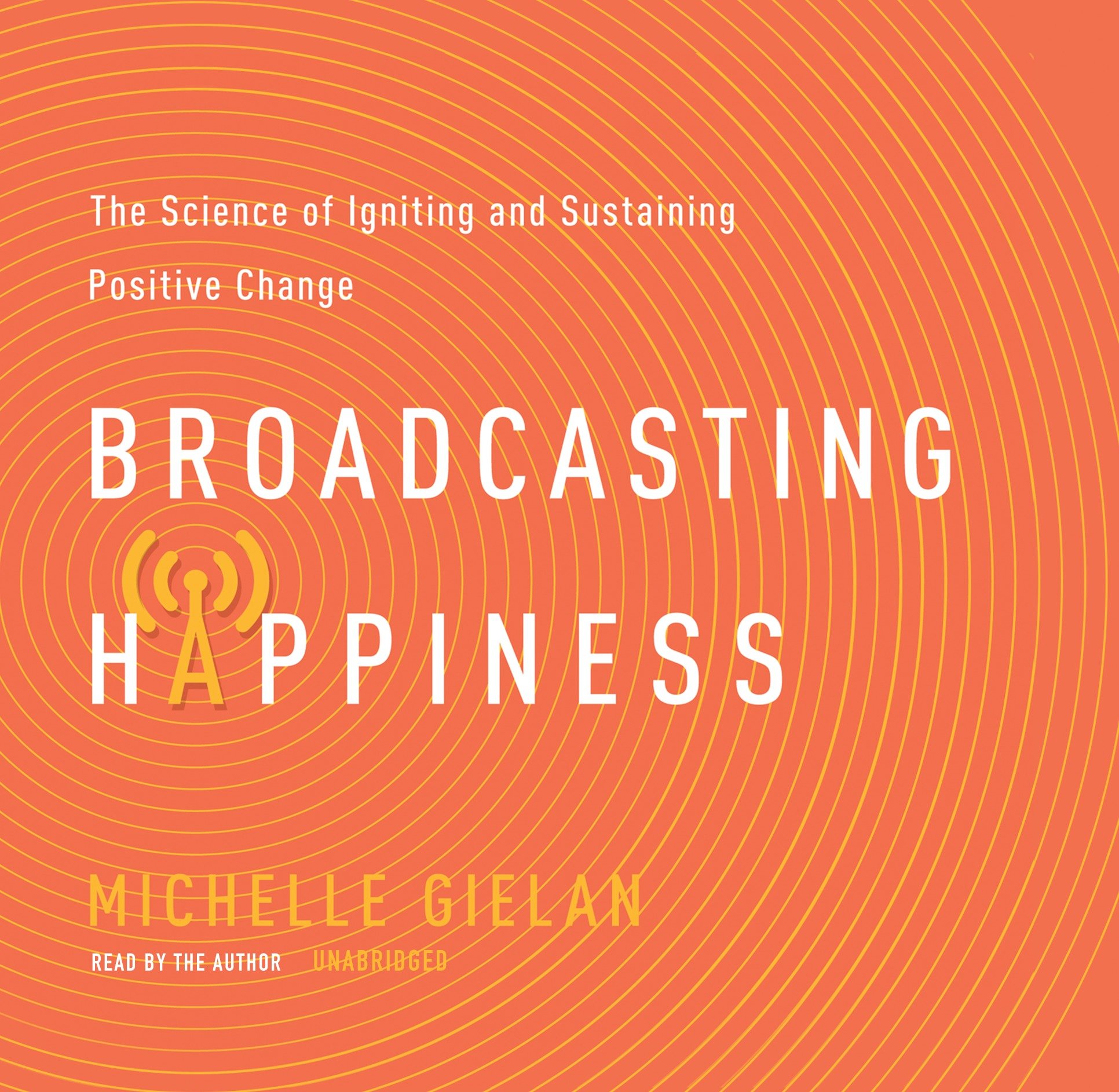My Favorite Positive Psychology Book This Year!August 7 , 2015

I’m back from my 6 month sabbatical in Colombia. It was a great trip, full of self-learning, recharging and family time. Lots more to share on that in another post…
Today I want to talk about one of my favorite positive psychology books I’ve read in a long time. It’s called ‘Broadcasting Happiness’ and it is everything a positive psychology book should be. The author, Michelle Gielan, summarizes sixteen years of top positive psychology research (including research published THIS year) into a fun book that is practical and incredibly useful. She weaves powerful stories throughout that make the learnings come alive.
Michelle brings a fresh new perspective that sets it apart from other positive psychology books. Rather than focusing solely on what you can do to make yourself happier, she also shows you how your actions can help the people around you feel happier — your coworkers, your significant other, your family and your friends.
This former CBS national anchor integrates powerful tools from the world of broadcast journalism with the most recent research. This book will make you into your own broadcaster — showing you how to spread positive perspectives and positive emotions with your everyday words and deeds.
In Part I, you learn how to utilize the proven tools of positive psychology to bring up the mood of people on your teams, to help them think more clearly, be more engaged and find creative solutions to problems.
In Part II, my favorite section, Michelle’s tools and fresh perspectives are at their best. She tackles the tough subjects of how to deal with negative people and how to deliver bad news. These two chapters are worth going into a bit more detail here.
Chapter 6: Strategic Retreats: Deal with Negative People. While you can choose happiness for yourself, you are also greatly affected by the emotions of others. In this chapter, you’ll learn how to work through the negative people at work without getting pulled into their emotional spirals.
- Strategic Retreat. If you are in a conversation that is necessary but is dragging you down, it can be a brilliant time step out to recharge and plan a better way to have that conversation. This is especially useful if you are feeling depleted, the other person is caught up in strong negative emotions or you are outnumbered by negative voices.
- Regroup. Once you are free of the negative space, you’ll want to move yourself to a more positive mindset before heading back into that discussion. Michelle gives a lot of great ideas on how to do this in the book, many of which are familiar to you as I talk about them a lot on my blog: https://www.erickarpinski.com/5-habits/
- Re-Enter. Plan a time and place that you’ll be ready for the conversation and the negative person may be in a better mood. Plan out how you are going to get what you need from the conversation while keeping the discussion on a positive path. Practice the conversation a few times before it happens so you are ready to counter the negative without falling into it. When you get what you need, move on.
Chapter 7 The Four C’s: Deliver Bad News Better. In this chapter Michelle lays out four steps for delivering bad news in constructive and compassionate ways.
-
- Create Social Capital. Build relationships with your team along the way. If you’ve supported your teammates, connected with them and recognized them for their accomplishments in the good times it makes delivering the bad news easier.
-
- Context. Let them know why the decisions were made and the meaning behind the decision.
-
- Compassion. Express that you understand that the news is stressful or creates more work or challenge for them. Compassion is a path to connection even in unfavorable circumstances.
- Committed. Help them develop a plan to manage the bad news and commit to do what you can to help them achieve it.
In Part 3 she again brings that broadcasting experience to the fore and teaches you how to make the most of the good things that happen. This helps generate contagious optimism to your work teams and your social network that will continue to spread well beyond your own circle.
All in all a very helpful book that is worth the read. Go to it!
Eric Karpinski The Happiness Coach
